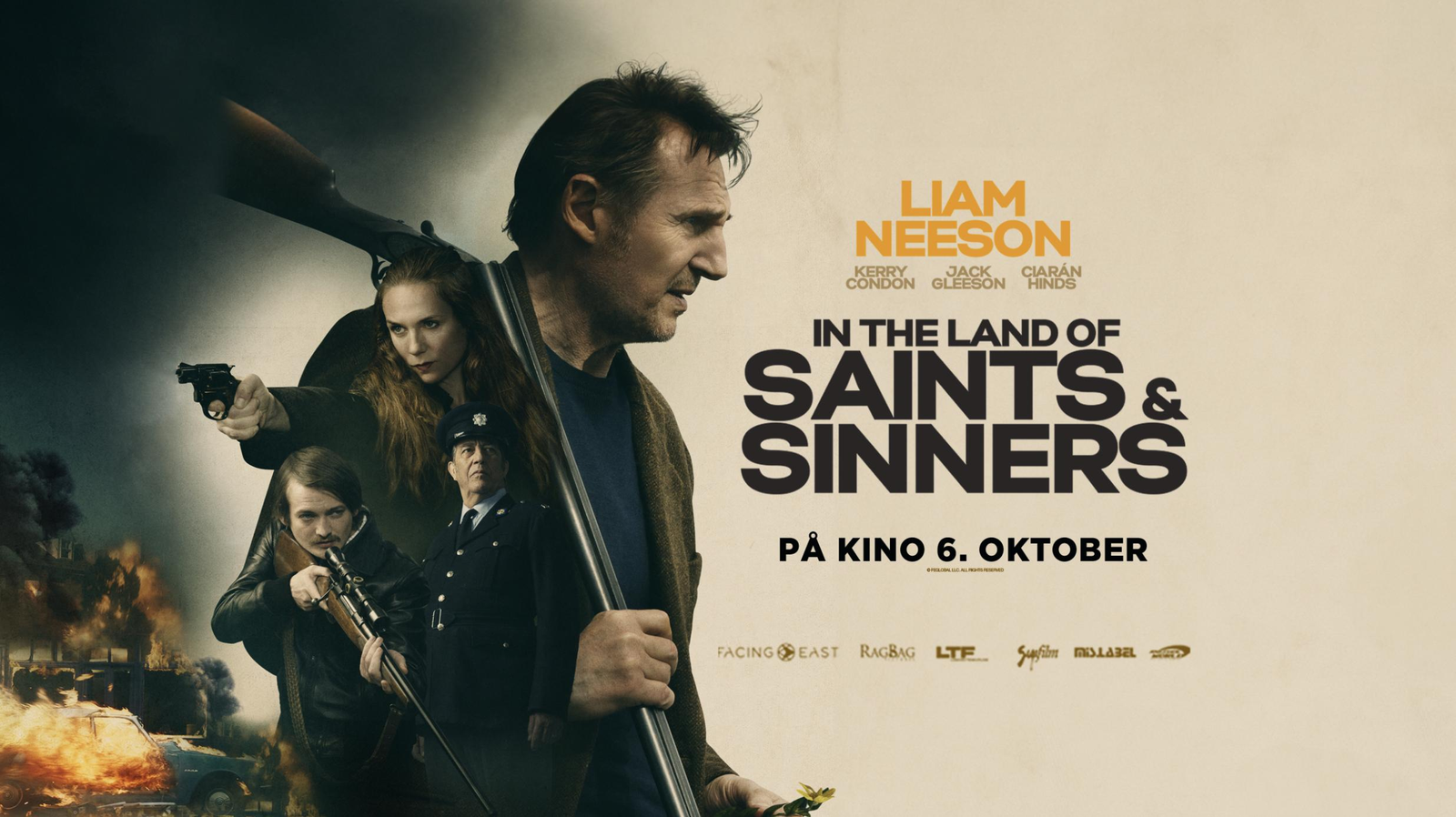The Duality of Human Nature in In the Land of Saints and Sinners

“In the Land of Saints and Sinners” is a 2023 action thriller that delves into the complexities of morality, redemption, and the enduring impact of violence, set against the backdrop of rural Ireland during a turbulent period. Starring Liam Neeson, the film explores the blurred lines between good and evil, questioning whether true absolution is ever attainable. This article provides a comprehensive analysis of the film, examining its narrative, themes, characters, and the historical context that shapes its story.
Setting the Scene: 1970s Rural Ireland
The film unfolds in the fictional coastal town of Glencolmcille, County Donegal, Ireland, during the 1970s. This era was marked by significant political and social unrest, most notably the Troubles in Northern Ireland. While Glencolmcille is geographically distant from the heart of the conflict, the pervasive atmosphere of tension, fear, and moral compromise casts a long shadow over the community.
The stark and beautiful landscape of Donegal becomes a character in itself. The rugged coastlines, windswept fields, and isolated villages contribute to a sense of both refuge and confinement. This setting underscores the characters’ internal struggles and their attempts to escape their pasts, highlighting the isolation and vulnerability that can exist even within a close-knit community.
The Narrative Unfolds: A Collision of Pasts
“In the Land of Saints and Sinners” centers on Finbar Murphy (Liam Neeson), a former IRA assassin who has sought solace and anonymity in Glencolmcille. He strives to atone for his violent past by leading a quiet life as a fisherman, hoping to find redemption in the simplicity of his daily routine. However, his carefully constructed peace is shattered by the arrival of a group of IRA terrorists, led by the formidable Doirean (Kerry Condon).
Doirean and her crew are fugitives, having committed a brutal act of violence elsewhere. They seek temporary refuge in Glencolmcille, unaware of Finbar’s past. Their presence ignites a chain of events that forces Finbar to confront his past and make a difficult choice: protect the fragile peace he has built or defend his community against the encroaching violence. As the conflict escalates, Finbar is drawn back into the world he desperately tried to leave behind, forcing him to question the possibility of true redemption.
Exploring the Core Themes: Morality and its Complexities
The film grapples with several profound themes, exploring the nuances of morality and the lasting consequences of violence.
Redemption and Forgiveness: A central theme is the exploration of whether redemption is possible for those who have committed heinous acts. Finbar’s internal struggle with his past sins is a driving force of the narrative, prompting questions about the nature of forgiveness, both self-forgiveness and forgiveness from others. The film doesn’t offer easy answers, instead presenting a complex and nuanced portrayal of the struggle for absolution.
The Cycle of Violence: The film poignantly illustrates the cyclical nature of violence, demonstrating how past actions can ripple through time, perpetuating further conflict and suffering. The arrival of Doirean and her crew acts as a catalyst, reigniting Finbar’s dormant violent tendencies and highlighting the difficulty of escaping the grip of the past. It suggests that
violence often begets more violence, creating a destructive cycle that is difficult to break.
Moral Ambiguity: “In the Land of Saints and Sinners” avoids simplistic depictions of good versus evil. Instead, it presents characters with complex motivations and moral dilemmas. Finbar, despite his history as an assassin, is portrayed with empathy, as a man haunted by his past and desperately seeking redemption. Doirean, while ruthless and driven, is also presented as a product of her circumstances, driven by her own sense of loyalty and purpose. This moral ambiguity forces the audience to confront uncomfortable questions about the nature of justice and the complexities of human behavior.
The Lingering Shadow of the Troubles: While the film isn’t directly about the Troubles themselves, the conflict serves as a crucial backdrop, influencing the characters’ actions and shaping the overall atmosphere. The violence and unrest of the era permeate the narrative, reminding viewers of the deep scars left by the conflict on Irish society.

Character Analysis: Navigating Moral Dilemmas
The film boasts a cast of compelling characters, each wrestling with their own inner demons and moral choices.
Finbar Murphy (Liam Neeson): Neeson delivers a powerful and nuanced performance as Finbar, a man burdened by his past. He embodies the internal conflict between his desire for redemption and the ingrained violence that he struggles to suppress. Finbar is not a stereotypical action hero; he is a flawed and complex individual, making his journey all the more compelling.
Doirean (Kerry Condon): Condon portrays Doirean with chilling intensity, capturing her ruthlessness and unwavering commitment to her cause. While her actions are often brutal, the film also offers glimpses into her motivations, revealing a complex character shaped by her experiences.
Supporting Characters: The supporting characters, including the local villagers and other members of Doirean’s crew, add depth and texture to the narrative. They represent a range of perspectives and experiences, further highlighting the moral complexities of the situation.
Cinematography and Setting: Creating Atmosphere
The film’s visual style and setting are integral to its storytelling, creating a palpable sense of atmosphere and enhancing the emotional impact of the narrative.
The Irish Landscape as a Character: The breathtaking landscapes of Donegal are not merely a backdrop; they are an active participant in the story. The rugged beauty and isolation of the region mirror the characters’ internal struggles and their sense of being trapped by their pasts.
Visual Tone and Style: The film employs a gritty and realistic visual style, reflecting the harsh realities of the story. The muted color palette and natural lighting contribute to a somber and contemplative atmosphere, enhancing the emotional weight of the narrative.
FAQs
What is the central plot of In the Land of Saints and Sinners?
The novel revolves around a complex web of crime, betrayal, and moral dilemmas in the lives of the central characters. It follows the story of a woman named Sinead, whose life is disrupted when her past resurfaces, and she is forced to confront dark secrets. The narrative explores themes of redemption, guilt, and survival as Sinead faces both internal and external conflicts.
Who are the main characters in the book?
The main characters include Sinead, the protagonist, who struggles with her past while trying to find peace in her present life. Other key figures include Liam, a mysterious figure from her past, and various family members and acquaintances who become embroiled in the unfolding drama.
What are the primary themes explored in the book?
The novel explores themes such as forgiveness, redemption, guilt, loyalty, and the consequences of one’s actions. It also delves into the tension between morality and survival, particularly in a crime-ridden, morally gray world.
In summary
“In the Land of Saints and Sinners” is more than just a typical action thriller. It is a thought-provoking exploration of complex themes, set against the backdrop of a turbulent period in Irish history. The film’s strong performances, evocative setting, and nuanced narrative combine to create a compelling cinematic experience that lingers long after the credits roll. By delving into the gray areas of morality and the human cost of violence, the film offers a powerful reflection on the human condition and the enduring search for redemption. It encourages viewers to consider the complexities of good and evil, and the enduring impact of the past on the present.
To read more, Click here



Leave a Comment